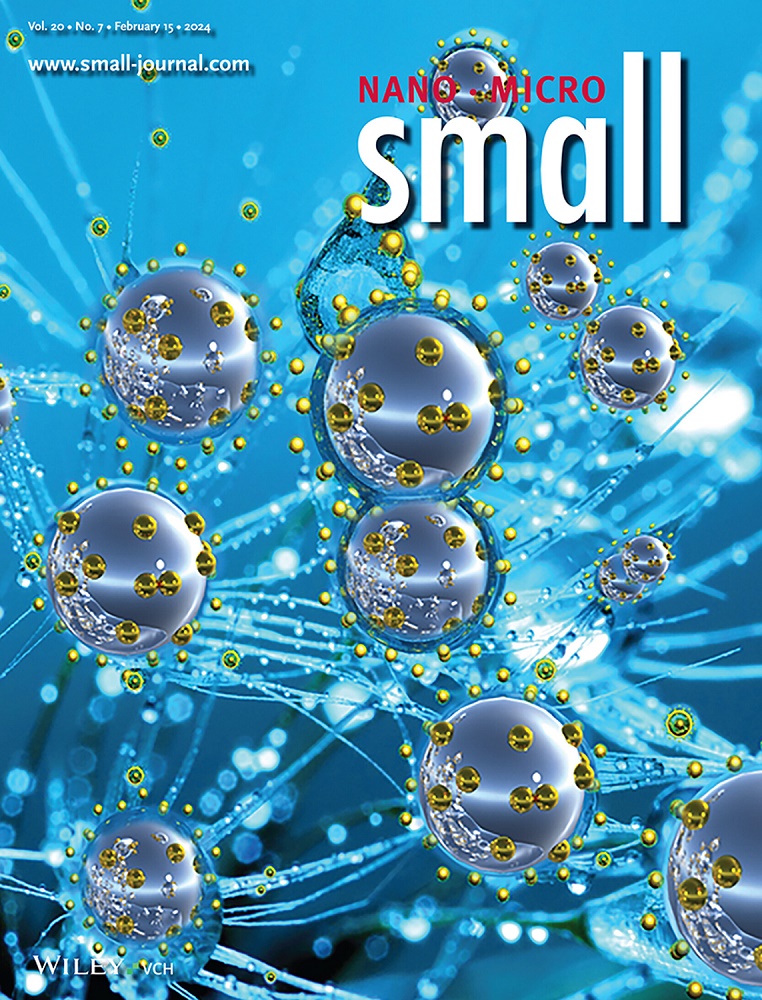卤化物变化对MAPbX3 (X = Cl, Br和I)阳离子动力学的影响。
IF 13
2区 材料科学
Q1 CHEMISTRY, MULTIDISCIPLINARY
引用次数: 0
摘要
我们研究了MAPbCl3中甲基铵(MA)阳离子在所有晶体相中的温度依赖动力学。我们确定了两种不同的运动:i)在正交相中绕C-N轴旋转三次,活化能为16 meV; ii)整个分子在四方/立方相中旋转四次,活化能为60 meV。为了探索卤化物效应,我们将MAPbCl3与MAPbBr3和MAPbI3进行了比较,揭示了旋转运动与卤化物组成之间的强烈相关性。由于持续的八面体扭曲和Pb - Cl键的变化,MAPbCl3的三倍旋转开始的温度范围比MAPbBr3和MAPbI3更宽。此外,MAPbCl3在四方向立方相变时表现出弹性强度的急剧转变,而MAPbBr3和MAPbI3则没有这种变化。三次旋转的激活能和起始温度的对比分析显示了一个明显的趋势:MAPbI3 > MAPbBr3 > MAPbCl3。这与从I⁻到Cl⁻的离子半径减小一致,减少了空间限制,增强了MA⁺的旋转自由度。MAPbCl3中明显的八面体畸变创造了一个更灵活的框架,即使在较低的温度下也能实现易阳离子重定向和多种旋转构型,从而降低了起始温度和活化能。本文章由计算机程序翻译,如有差异,请以英文原文为准。
Effect of Halide Variations on Cation Dynamics in MAPbX3 (X = Cl, Br, and I).
We investigate the temperature-dependent dynamics of methylammonium (MA) cations in MAPbCl3 across all crystallographic phases. We identify two distinct motions: i) a threefold rotation around the C-N axis in the orthorhombic phase, with an activation energy of 16 meV, and ii) a fourfold rotation of the entire-molecule in the tetragonal/cubic phase, with an activation energy of 60 meV. To explore the halide effects, we compare MAPbCl3 with MAPbBr3 and MAPbI3, revealing a strong correlation between rotational motion and halide composition. The onset of the threefold rotation in MAPbCl3 spans a broader temperature range than in MAPbBr3 and MAPbI3 due to persistent octahedral distortions and Pb─Cl bond variations. Additionally, MAPbCl3 exhibits a sharp transition in elastic intensity at the tetragonal-to-cubic phase transition, absent in MAPbBr3 and MAPbI3. A comparative analysis of activation energies and onset temperatures for the threefold rotation reveals a distinct trend: MAPbI3 > MAPbBr3 > MAPbCl3. This aligns with the decreasing ionic radius from I⁻ to Cl⁻, reducing steric constraints and enhancing MA⁺ rotational freedom. The pronounced octahedral distortions in MAPbCl3 create a more flexible framework, enabling facile cation reorientation and multiple rotational configurations even at lower temperatures, leading to a lower onset temperature and activation energy.
求助全文
通过发布文献求助,成功后即可免费获取论文全文。
去求助
来源期刊

Small
工程技术-材料科学:综合
CiteScore
17.70
自引率
3.80%
发文量
1830
审稿时长
2.1 months
期刊介绍:
Small serves as an exceptional platform for both experimental and theoretical studies in fundamental and applied interdisciplinary research at the nano- and microscale. The journal offers a compelling mix of peer-reviewed Research Articles, Reviews, Perspectives, and Comments.
With a remarkable 2022 Journal Impact Factor of 13.3 (Journal Citation Reports from Clarivate Analytics, 2023), Small remains among the top multidisciplinary journals, covering a wide range of topics at the interface of materials science, chemistry, physics, engineering, medicine, and biology.
Small's readership includes biochemists, biologists, biomedical scientists, chemists, engineers, information technologists, materials scientists, physicists, and theoreticians alike.
 求助内容:
求助内容: 应助结果提醒方式:
应助结果提醒方式:


